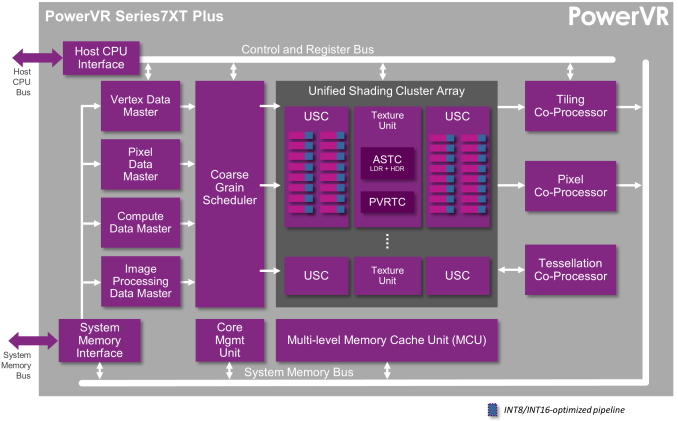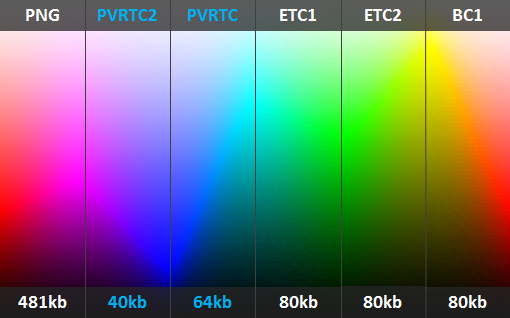Apple To Develop Own GPU, Drop Imagination's GPUs From SoCs
by Ryan Smith on April 3, 2017 6:30 AM ESTImagination: Patents & Losing an Essential Contract
As for Imagination, the news is undoubtedly grim, but not necessarily fatal. Imagination has never hidden the fact that Apple is their most important customer – even labeling them as an “Essential Contract” in their annual report – so it’s no secret that if Apple were to leave Imagination, it would be painful.
By the numbers, Apple’s GPU licensing and royalties accounted for £60.7M in revenue for Imagination’s most recent reporting year, which ran May 1st, 2015 to April 30th, 2016. The problem for Imagination is that this was fully half of their revenue for that reporting year; the company only booked £120M to begin with. And if you dive into the numbers, Apple is 69% of Imagination’s GPU revenue. Consequently, by being dropped by Apple, Imagination has lost the bulk of their GPU revenue starting two years down the line.
| Imagination Financials: May 1st, 2015 to April 30, 2016 | |||
| Company Total | GPUs Total | Apple | |
| Revenue (Continuing) | £120M | £87.9M | £60.7M |
| Operating Income | -£61.5M | £54.7M | |
The double-whammy for Imagination is that as an IP licensor, the costs to the company of a single customer is virtually nil. Imagination still has to engage in R&D and develop their GPU architecture and designs regardless. Any additional customer is pure profit. But at the same time, losing a customer means that those losses directly hit those same profits. For the 2015/2016 reporting year, Apple’s royalty & licensing payments to Imagination were greater than the profits their PowerVR GPU division generated for the year. Apple is just that large of a customer.
As a result, Imagination is being placed in a perilous position by losing such a large source of revenue. The good news for the company is that their stakes appear to be improving – if slowly – and that they have been picking up more business from other SoC vendors. The problem for Imagination is that they’ll need a drastic uptick in customers by the time Apple’s payments end in order to pay the bills, never mind turning a profit. Growing their business alone may not be enough.
Which is why Imagination’s press release and the strategy it’s outlining is so important. The purpose of Imagination’s release isn’t to tell the world that Apple is developing a new GPU, but to outline to investors and others how the company intends to proceed. And that path is on continued negotiations with Apple to secure a lesser revenue stream.
The crux of Imagination’s argument is that it’s impractical for Apple to develop a completely clean GPU devoid of any of Imagination’s IP, and this is for a few reasons. The most obvious reason is that Apple already knows how Imagination’s GPUs work, and even though Apple wouldn’t be developing a bit-for-bit compatible GPU – thankfully for Apple, the code app developers write for GPUs operates at a higher level and generally isn’t tied to Imagination’s architecture – those engineers have confidential information about those GPUs that they may carry forward. Meanwhile on the more practical side of matters, Imagination has a significant number of GPU patents (they’ve been at this for over 20 years), so developing a GPU that doesn’t infringe on those patents would be difficult to do, especially in the mobile space. Apple couldn’t implement Imagination’s Tile Based Deferred Rendering technique, for example, which has been the heart and soul of their GPU designs.
However regardless of the architecture used and how it’s designed, the more immediate problem for Apple – and the reason that Imagination is likely right, to an extent – is replicating all of the features available in Imagination’s GPUs. Because Apple’s SoCs have always used GPUs from the same vendor, certain vendor-specific features like PowerVR Texture Compression (PVRTC) are widely used in iOS app development, and Apple has long recommended that developers use that format. For their part, Apple is already in the process of digging themselves out of that hole by adding support for the open ASTC format to their texture compression tools, but the problem remains of what to do with existing apps and games. If Apple wants to ensure backwards compatibility, then they need to support PVRTC in some fashion (even if it’s just converting the textures ahead of time). And this still doesn’t account for any other Imagination-patented features that have become canonized into iOS over time.
Consequently, for Imagination their best move is to get Apple to agree to patent indemnification or some other form of licensing with their new GPU. For Apple it would ensure that nothing they do violates an Imagination patent, and for Imagination it would secure them at least a limited revenue stream from Apple. Otherwise Imagination would be in a very tight spot, and Apple would face the risk of patent lawsuits (though Imagination isn’t making transparent threats, at least not yet).












144 Comments
View All Comments
Laststop311 - Monday, April 10, 2017 - link
Thats why you disable icloud backupsMeteor2 - Wednesday, April 5, 2017 - link
'paranoid'-- you used the correct word there.
pravakta - Friday, April 7, 2017 - link
"Imagination Technologies just brokered a deal w/ Qualcomm"What is the source of this info? Where Qualcomm will use IMG GPU? What about their own Adreno?
mrpii - Tuesday, April 4, 2017 - link
I have to wonder if this isn't about being competitive with CUDA/OpenCL engines that run on GPU. Not only can this dramatically speed up some compression and encoder algorithms running on a GPU, but right now on a Mac, there is no support for things like Tensorflow running on an Imagination GPU. Apple hardware can't play along.Torrijos - Wednesday, April 5, 2017 - link
Actually OpenCL on the macPro was one thing that was working and using both GPUs.The problem then was that the tech wasn't properly used by software developers and such and then the GPUs didn't evolve.
Check the Luxmark 3 Benchmarks
http://barefeats.com/hilapmore.html
Apple's Final Cut Pro too is optimised etc.
Apple's true failure was believing that the entire industry was going to switch towards more abstraction of the hardware so that 2 GPUs could fight with single GPUs.
HSA still is in the future...
crossFire and SLI look to be dying...
Apple now feels it's time to customer design it and ensure they aren't dependent on other's choices.
BillBear - Wednesday, April 5, 2017 - link
You can do neural network training in Tensorflow and then export that neural net to run under Apple's Basic Neural Network Subroutines API which was added in the last version of MacOS and iOS.https://www.bignerdranch.com/blog/use-tensorflow-a...
easp - Thursday, April 6, 2017 - link
Apple may well have some of their own graphics IP to bargain with. Technically, this isn't their first GPU. They shipped the short-lived QuickDraw 3D accelerator in 1995.farloo - Tuesday, April 11, 2017 - link
Looks like the future of Apple is ARM, even for their laptops and PCs. With computing relying less and less on <a href="http://www.emobly.com/">CPUs</a> and more on dedicated processing units, the in-house GPU thing makes sense.amosbatto - Wednesday, April 12, 2017 - link
In no way will this save Apple money when they are currently paying Imagination around 30 cents per device. For Apple, that is pocket change. It is probably worth $60 million per year for Apple to pay Imagination to avoid lawsuits over the IP, because they will need to defend against AMD, nVidia, Intel and Qualcomm as well, which means the need to be able to counter sue using Imagination's patents. Otherwise, Apple is a prime target for the picking.msroadkill612 - Monday, May 1, 2017 - link
Whatever, what I see is the prescience of AMD in seeing correctly (IMO), that the future belonged to having a presence in both vital processors to IT solutions - cpu & gpu, ~15 years ago. (formally bought ATI ~2005)Now we have apple and intel (that recent israeli company buy) in a mad scramble to catch up.